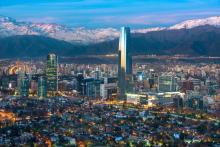Land Library
Welcome to the Land Portal Library. Explore our vast collection of open-access resources (over 74,000) including reports, journal articles, research papers, peer-reviewed publications, legal documents, videos and much more.
/ library resources
Showing items 1 through 9 of 54.An Introduction to Blockchain
Blockchain, at its most basic, is database technology. It is a type of distributed ledger, that can be concurrently accessed and updated by multiple users.
An Introduction to Drones
Land surveying and mapping are evolving rapidly due to advances in unmanned aerial system, or drone, technology.
An Introduction to Dual-Band GNSS
The vast majority of Global Navigation Satellite Systems (GNSS)-enabled consumer devices—like phones, tablets, smart watches, and car navigation systems—use single-frequency receivers, which are only accurate to abo
An Introduction to Machine Learning
Machine learning is an application of artificial intelligence (AI) that enables systems to programmatically “learn” and improve from past experience.
An Introduction to Self-Sovereign Identity
Self-sovereign identity (SSI) is a new paradigm for creating digital identity systems that function more like identity does in the physical world, where every person has a unique and persistent ide
An Introduction to 3D Cadastre
Over the last half century the world has seen rapid urbanization, which is anticipated to increase over the foreseeable future.
Low productivity cattle ranching, with its linkages to rural poverty, deforestation and greenhouse gas (GHG) emissions, remains one of the largest sustainability challenges in Brazil and has impacts worldwide.
The impact of climate change on drought main characteristics was assessed over Southern South America. This was done through the precipitation outputs from a multi-model ensemble of 15 climate models of the Coupled Model Intercomparison Project Phase 5 (CMIP5).
Land change in the Greater Antilles differs markedly among countries because of varying socioeconomic histories and global influences. We assessed land change between 2001 and 2010 in municipalities (second administrative units) of Cuba, Dominican Republic, Haiti, Jamaica, and Puerto Rico.







